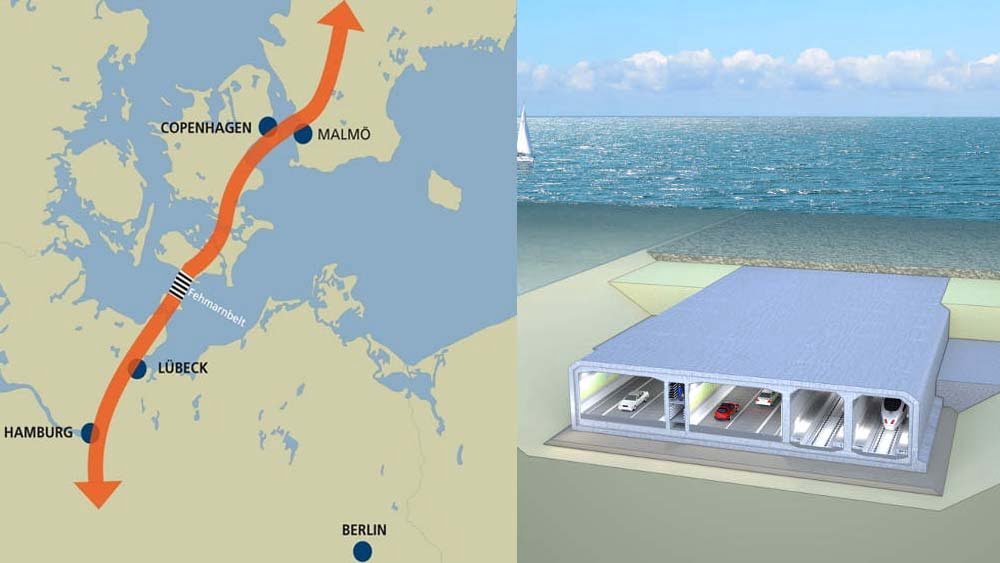All five production lines for standard tunnel elements are now operational in the 18 km-long Fehmarnbelt tunnel. When completed, it will be the largest infrastructure project in Northern Europe and the longest immersed tunnel in the world.
The Fehmarnbelt Tunnel will connect Denmark and Germany by road and rail traffic when completed in 2029. This construction project provides a fast rail connection between Scandinavia and Central Europe, taking seven minutes by train and ten minutes by car.
The immersed tunnel has five tunnel corridors, with a total width of 42,00 m. Two of these corridors are two-lane and are for motor vehicles, while two are single-lane and are for rail traffic. The remaining tube is for service and escape.
Peri manufactured 79 standard tunnel elements weighing 73,000 tonnes.
The formwork solution for the production of the 79 standard tunnel elements complies with high performance, productivity, and safety standards. The standard tunnel elements are made on five parallel production lines; the latest line started work in February 2024.
Peri steel formwork solutions were made at PERI plants in Poland, Italy, and Germany. More than 11.000 tonnes of formwork material in PERI solutions was transported to the production site by twelve ships and more than 275 trucks.
Fehmarnbelt Tunnel Project
The Fehmarnbelt Tunnel, which is submerged under the sea, is being built to carry rail and road transport between Rødbyhavn in Denmark and Puttgarden in Germany. The length of the tunnel is 18 kilometers. When completed, it will become the world’s longest submerged tunnel and the fastest route between Scandinavia and Central Europe.
The project is part of the European TEN-T network, which aims to organize infrastructure and reduce the environmental impact of the European transport network. The Danish Parliament approved the project in 2009 and the German Parliament in 2010.
The Ministry of Transport awarded Femern, a subsidiary of Danish government-owned Sund & Belt, the responsibility for planning, building and operating the tunnel.
Construction on the project began in Denmark in 2020 and in Germany in 2021. The project requires an investment of approximately 55.1 billion DKR (about $8 billion) to be completed by 2029.

